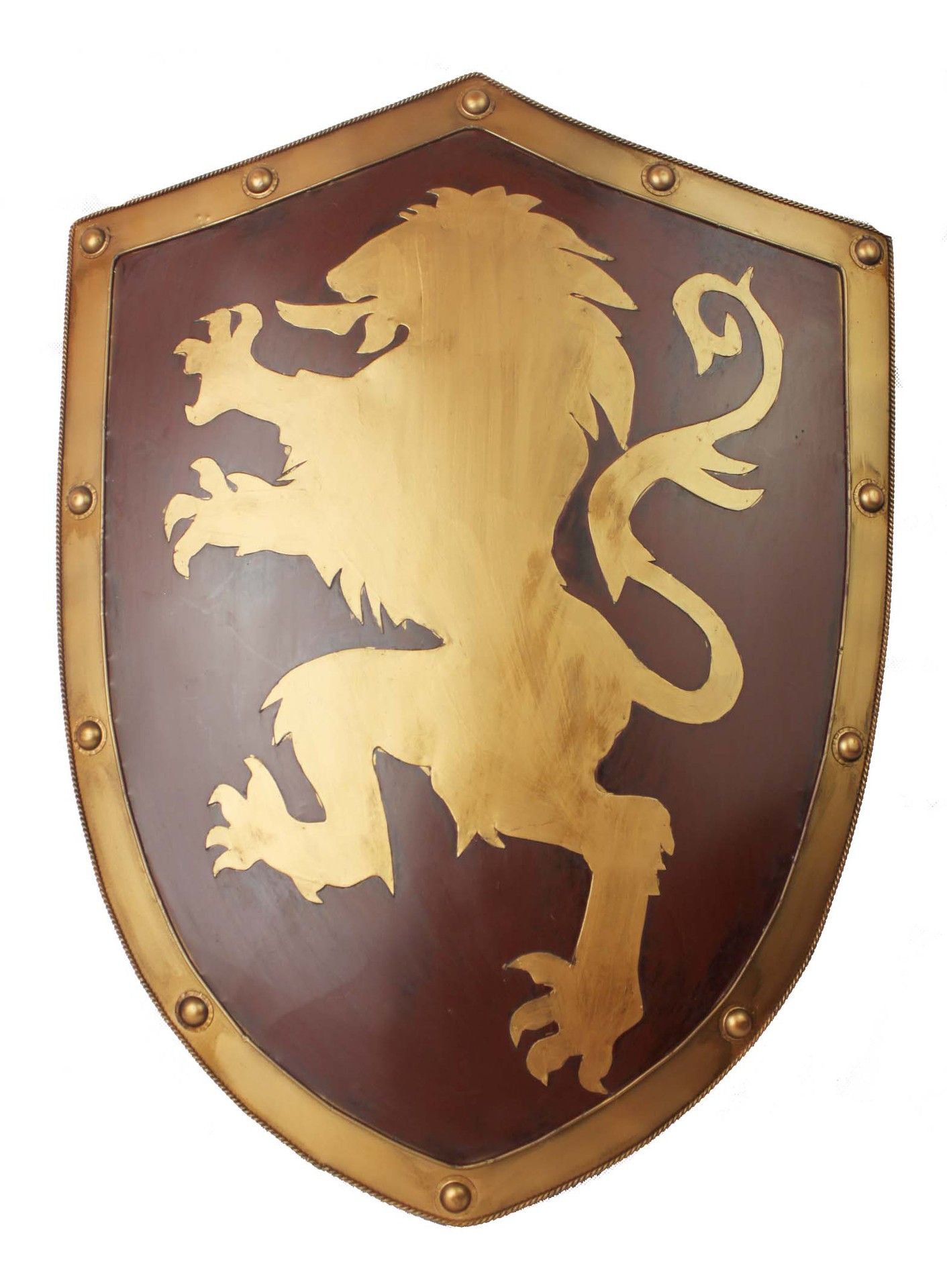


Heater shields were typically made from thin wood overlaid with leather. As plate armor began to cover more and more of the body, the shield grew correspondingly smaller, until by the mid 14th century, it was hardly seen at all outside of the tournament. Smaller than the kite shield it was more manageable and could be used either mounted or on foot. From the 15th century, it evolved into highly specialized jousting shields, often a bouche containing a notch or “mouth” for the lance to pass through. Or heater-shaped shield is a form of European medieval shield, developing from the early medieval kite sheld in the mid 13th century. Thus, the kite shield bears a heavy association to the medieval Norman style of armor and warfare, a style heavily reliant on cavalry. The kite shield is the type of shield featured on the Bayeux Tapestry, a medieval tapestry chronicling the Norman invasion of England in 1066. Functionally, the enarmes greatly increased the likelihood that the soldier could hold on to his shield, an important consideration when in the heat of battle. The enarmes were leather straps that allowed the knight or soldier to attach the shield to his forearm, rather than try and hold one strap with his wrist. Many kite shields possessed a gradual curvature, so that it would better fit the contour of the soldiers body.Īn innovation that was added to the kite shield at a later point was the attachment of enarmes to the back of the shield. The shield itself was wide at the top, and tapered toward the bottom. The kite shield was adapted so that the soldier could protect his foreleg while in combat. Sharp edges allow landing a strike with the shield while the opponent is open to quick counter-attack.Ĭombat shields have lost their value with the proliferation of firearms, however, at a subsequent time, there have been manufacturers of decorative shield replicas that served as heraldic emblems, decorations, and collectibles.Where early medieval shields were lightly constructed and tended to be small, the kite shield was a larger shield that first came into use around the 10th century. Medieval buckler was the smallest shield type, often used for fencing, and could also be used as a gauntlet in melee. Heavy infantry of the Middle Ages preferred sling and strapped shields to hand-held ones, so that two-handed polearms and crossbows can be used. For some, it is considered too heavy or cumbersome to be wielded in long drawn out fights. Tower and pavise shields were used in siege warfare to give cover to advancing troops. Aside from their defensive properties, they might be used as an improvised weapon in extreme circumstances. Curved metal boss made it convenient to deflect a blow. Round shield was a common warrior’s shield, constructed of wood and covered with leather. Period shields can be divided into several main types, most of which are represented in our medieval shields store:ĭuring the Middle Ages value of shields varied due to the development of armor and fencing. Their strength is sufficient to withstand both melee and polearm attacks, taking part in SCA heavy and reenactment fighting. Wood can be painted when covered with canvas. The body of the shield is usually made of wooden boards, reinforced with riveted metal shield boss. Today medieval shields for sale are made of plywood and metal. Some of them were covered with leather, which increased cushioning properties. Here, in ArmStreet one can buy medieval shields, Viking shields, knight shields, bucklers, blank shields to paint and even small fist shields to protect the knuckles.Īncient shields were made of solid wood, metal, bark, and of exotic materials, such as tortoise shell. Armour and shield aid you in two ways - making it harder to land an effective blow and absorbing the damage when they do, increasing the soak value. The shields were defensive equipment intended to protect soldiers from melee and ranged weapons. Medieval battlefield was a dangerous place and shield was often all that stood between a warrior and a quick death.


 0 kommentar(er)
0 kommentar(er)
